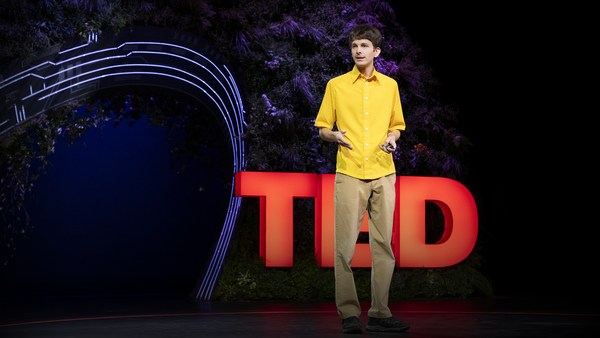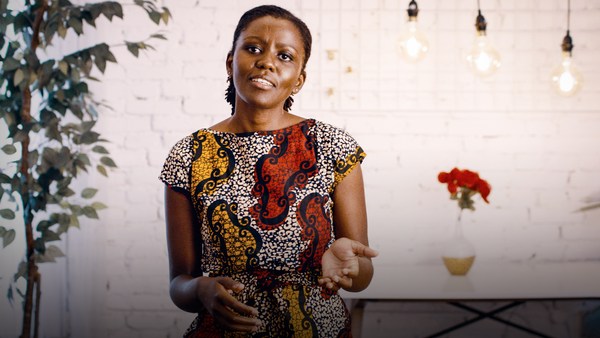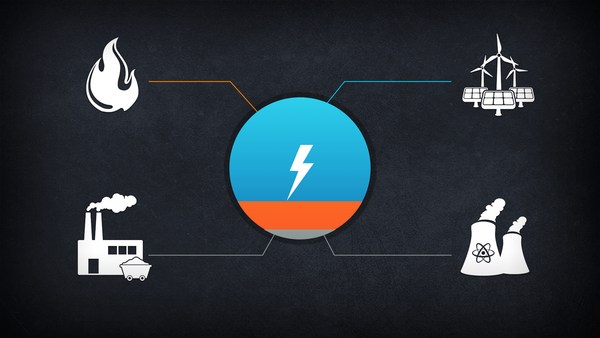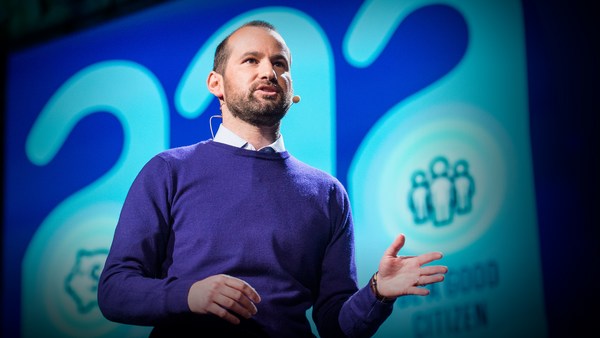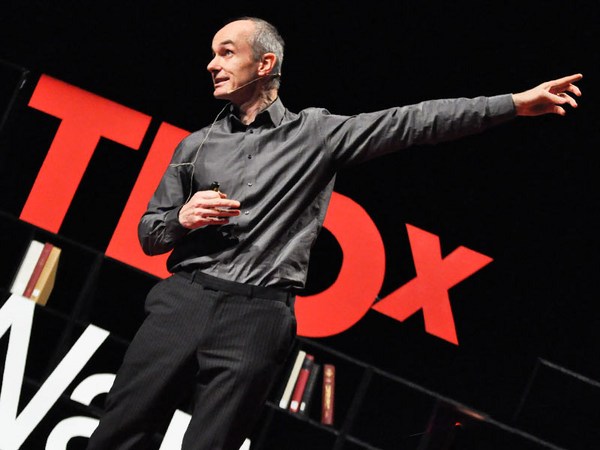"How many times must a man look up
Before he can see the sky?"
That's a quote from a famous song by Bob Dylan. I love that line because it reminds me that sometimes what we need is actually right there in front of us. I will argue that that is also the case with climate change. We can actually replace some of the biggest sources of the problem, oil, coal and gas, with something we have in abundance: wind.
In my country, Denmark, we are doing just that. Now we are a small country with a small population. If you haven't visited yet, please do so. We are all friendly people. As long as you don't criticize our national football team.
(Laughter)
Nothing makes a Dane proud like the knowledge that something we have done makes a positive difference in the world. Historically speaking, we’ve made a difference before. 1,000 years ago, countrymen of mine controlled most of northern Europe. I'm sure you've heard of them. Big, strong guys, helmets, beards, long hair. The Vikings.
Now I will make the case today that in order for us to fight climate change, we actually need to learn from the Vikings. But before we get to that, please indulge me. We have to go somewhere else. I have to say go back in time. Not all the way back to the Viking age in the heydays of Harald "Bluetooth," but to the 1970s during the oil crisis in Denmark. Not to a Viking fortress, but to a small workshop, in a barn, in a farm, in a village in Denmark. Meets Henrik Stiesdal. He’s not an accomplished, experienced engineer. He's 19 years old, a young man. He set himself a challenge. He thought, "What if I could make a wind turbine that could produce electricity?" And you know what? He did. How do I know? Because that's it. Not a model, not a replica. This is the actual one that Henrik made. He was kind enough to lend it to me. It says M1 on it. That stands for "mølle one," "mølle et" which translates into "turbine number one." And of course, this was just the first one he made. Later, he managed to build a big one that could supply his family with cheap, affordable electricity in the middle of the crisis. And soon after that, other farms asked Henrik to build a turbine for them as well. And he did. And eventually he actually sold the design to a company called Vestas. You might have heard of them because they are the biggest turbine producer in the world today. So this is how Henrik’s invention became a sort of the prototype for many, many of the wind turbines that you'll see all over the planet today.
Now a lot of things have happened since Henrik and other pioneers took the first steps back in the 1970s. In 1991, we built the first offshore wind farm in the world called Vindeby. Eleven turbines, 54 meters tall. That was considered a landmark. They were huge. Today, of course, they seem pretty tiny. This is Kriegers Flak. That's the biggest offshore wind farm in Denmark now. 72 turbines, 188 meters tall, each of them. To give you a comparison, that's twice the height of the Statue of Liberty. Every time one of those turbines has one rotation of the blades, it creates enough electricity to charge more than 1,400 cell phones. The park itself covers the electricity demand of 600,000 households.
So the story of wind power in Denmark is the story about how one turbine, on one farm sparked a transformation that influenced the whole country. We, of course, now hope, small as we may be, that we can spark a transformation that will also affect other countries. We are a green frontrunner, but we need to do more because at the same time, we rank number one in the EU, or at least as one of the biggest oil producers, in the EU. This has to change. And it will. Last year, the Danish government and the Danish parliament made an important decision. We’ve decided to put an end date on extraction of oil and gas in 2050 and immediately cancel all future licensing rounds.
(Applause)
That wasn't an easy decision. When we made the decision, we were the biggest oil producer in the EU. But the reason we made it, even though it was expensive, was because we need to show the world that there are actually alternatives to oil and gas.
Now, some of you are probably thinking that sounds very good, but how will you do it? What do you do the days when the wind doesn't blow? And what about the parts of our energy system that cannot be electrified? Surely you cannot fly a jet plane without jet fuels? Surely you cannot sail a big container ship without bunker oil? But actually, you can. This is an electrolyzer. The photo is from a visit I paid a factory in Denmark a few weeks ago. So it's not a prototype, it's not a model in a lab. It's a functioning machine, it's a commercial product. What does it do? It transforms electricity into hydrogen. And that, friends, that's the game changer. Because it makes it possible for us to solve two problems we have with wind energy. One, we can now store the energy for when the wind is not blowing. And two, we can now decarbonize parts of our energy system that we couldn't decarbonize before. Because the hydrogen can be transformed into green fuels. Imagine that. The wind in the North Sea is transformed by a turbine into electricity. The electrolyzer transforms that into hydrogen, and the hydrogen is then made into green, sustainable fuels that we can use to sail our ships and fly our planes. I know it sounds like science fiction, but actually it's just science.
Now in order for us to do that at a scale that we need, we will need a lot of renewable energy. We will need to massively expand our offshore wind capacity. And in Denmark, we're doing just that. A very important part of that strategy is to build the world's first energy island. This is a simulation of what it may end up looking like. 80 kilometers out in the sea, the size of 64 football fields, the biggest infrastructure investment in Danish history. We're changing literally the map of our country. Hundreds of wind turbines around it. When fully scaled, it'll be able to generate 10 gigawatts of green electricity. Now 10 gigawatts, that's enough to cover the demand of 10 million households. That's far more than we need in Denmark, which is good news, because then we can use it to make the hydrogen, to make the green fuels, and we can export it to other countries and thereby help them decarbonize their energy systems.
Some of you are probably thinking, "What does this have to do with the Vikings?" But do you know what it was that made the Vikings so successful? How they managed to go to Greenland? How they managed to sail to America 500 years before Christopher Columbus? Their secret? They exploited the wind. They put tremendous effort into making efficient sails, and it took as a long time for them to make a sail as it did to build a ship, and it was just as important. And that brings me to my main point. We need, as the Vikings did 1,000 years ago, to change the world by finding new and more efficient ways of exploiting the energy. This time, with slightly better haircuts --
(Laughter)
and the motivation that lies in the fact that this may be our biggest chance of making a positive difference in fighting climate change.
Now, some people will probably tell you that a small country cannot make a big difference. I beg to differ. When a young man like Henrik could make a difference for a whole country, why not also believe that a country like Denmark can make a difference for a whole world? We can't do it alone, but we can do a lot. By innovating, by creating new technology and new solutions, by exploiting something that is much bigger than ourselves, the forces of nature. If you ask the International Energy Agency, they will tell you that offshore wind has the potential to cover the current electricity demand of the entire world, not once, not twice, 18 times. So when you go to Denmark, you’ll meet a Dane. After you have said something nice about our football team,
(Chuckles)
try and ask her, "How do you think we should solve the climate crisis?" Chances are, she will say, "The answer, my friend, is literally blowing in the wind."
(Laughter)
Thank you.
(Applause)
[Take action on climate change at countdown.ted.com]

